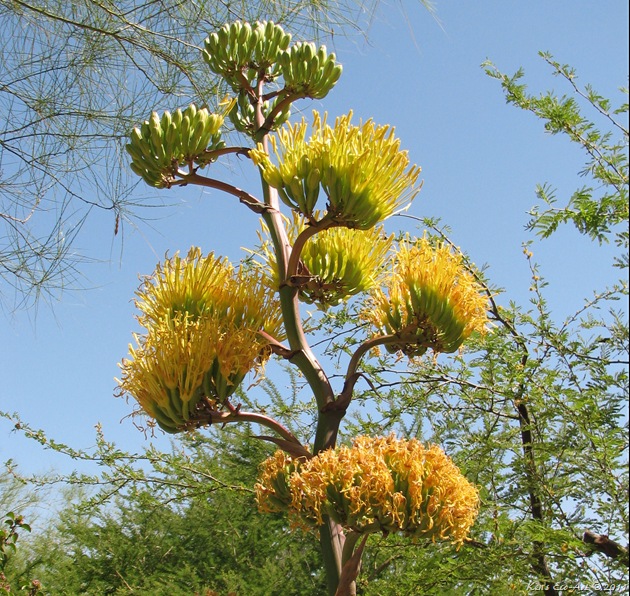Picture Notes: I captured this beautiful Century Plant (Fig. 01) on a road trip that took me through Nipton, CA back on 07/27/2009. Just outside the Nipton Café and gift shop there is a very un-kept desert garden of varying plants and cactus. This was actually one of the better looking species I found there.
Location Info: Nipton is an unincorporated town in San Bernardino County, California, on the northern edge of Mojave National Preserve, about 20 miles west of Searchlight, Nevada. From the California side, it is about 12 miles east of Highway 15 on Route 163 (Nipton Road), about 65 miles from Las Vegas. It has a population of 20 people.
Description: Century Plant (Agave americana), a.k.a. American Aloe. It is a common misconception that agave's are cacti. They are not related to cacti, nor are they closely related to Aloe whose leaves are similar in appearance. It is an agave originally from Mexico. Chiefly Mexican, agave's can be found in the southern and western United States and in central and tropical South America. They are succulents with a large rosette of thick fleshy leaves, from a greenish yellow to a grayish blue-green, each ending generally in a sharp point and with a spiny margin; the stout stem is usually short, the leaves appear to spring from the root. Its spreading rosette can be up to 13 feet wide with leaves up to 6 feet, each with a spiny margin and a heavy spike at the tip that can pierce to the bone. Along with plants from the related genus Yucca, there are a variety of Agave species, many popular as ornamental plants.
|
Each rosette is monocarpic and grows slowly to flower only once. The misnamed century plant typically lives only 10 to 30 years. During flowering, a tall stem or "mast" grows from the center of the leaf rosette and bears a large number of shortly tubular flowers.When it flowers, the spike with a cyme of big yellow flowers (Figs. 02 & 03) may reach up to 26 feet in height. These last two pictures were taken in the Ethel "M" Cactus Garden in Las Vegas. After development of fruit, the original plant dies after flowering, but suckers are frequently produced from the base of the stem, which become new plants, continuing its growth. Its common name likely derives from its semelparous nature of flowering only once at the end of its long life.
|
 |
| (Fig. 02) |
|
 |
| (Fig. 03) |
|